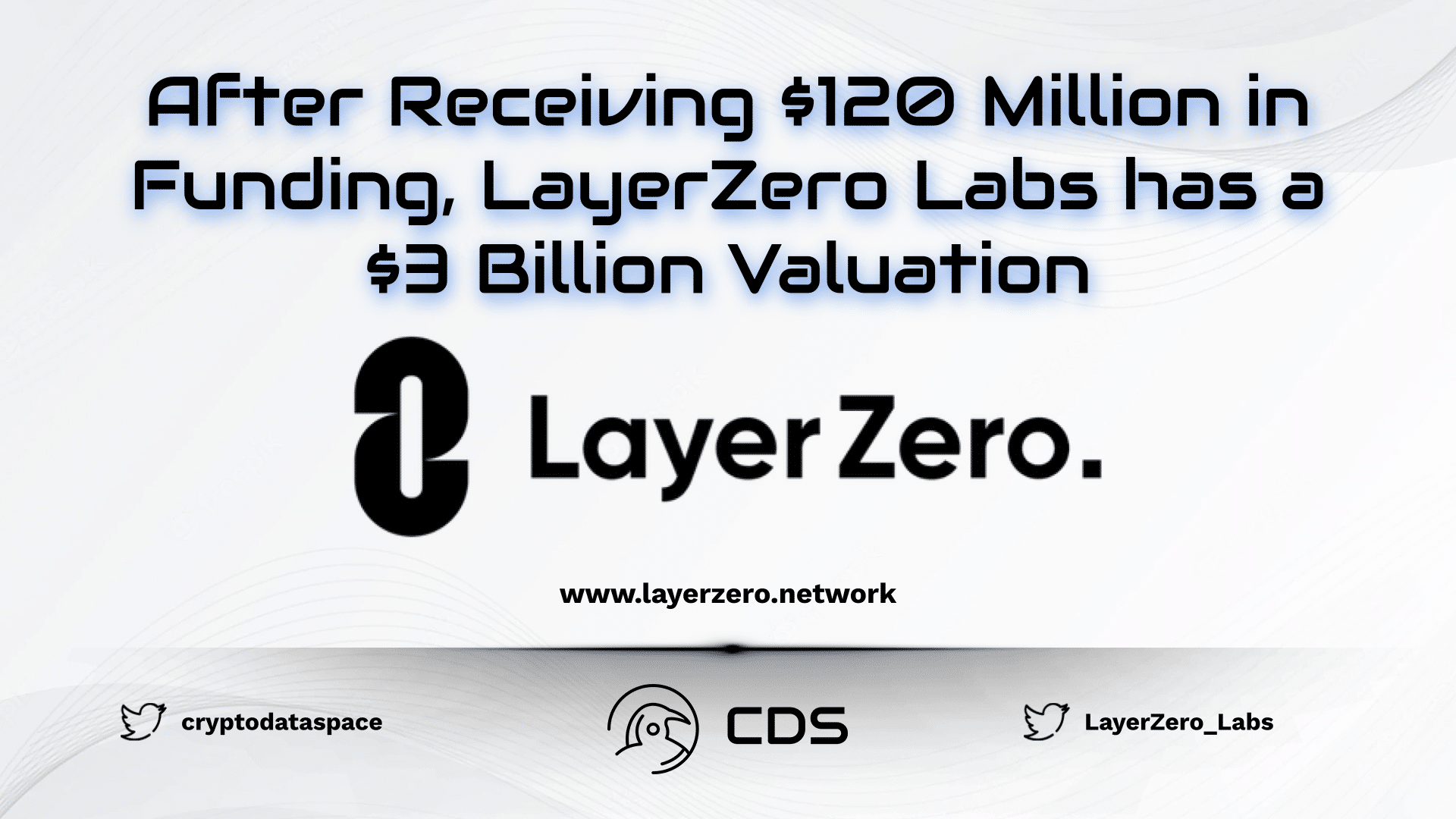Web3 messaging protocol LayerZero Labs announced on Tuesday that it had completed a $120 million Series B financing, increasing its valuation from $1 billion to $3 billion. Together with a16z crypto, Circle Ventures, Sequoia Capital, OpenSea, Samsung Next, Christie’s, and BOND, 33 investors took part in the Series B round. The platform has funded more than $250 million to date.

After Receiving $120 Million in Funding, LayerZero Labs has a $3 Billion Valuation

The company said the funds raised will be spent on growing the team and highlighting its presence in the Asia-Pacific region. This messaging protocol, in contrast to Web 2.0 messaging services like WhatsApp and Telegram, enables users to exchange various message types between blockchains, such as cross-chain interactions, obviating the requirement for intermediaries.
“Before the advent of the internet, computers existed in fragmented and disconnected data centers, much like many blockchains today. LayerZero is revolutionizing blockchains by creating one unified ecosystem, like the internet, that connects each blockchain’s developers and user community. The core principles of the LayerZero protocol are permissionless, censorship-resistant, and immutable,”
Ryan Zarick, Co-Founder and CTO of LayerZero Labs
On-chain apps like decentralized exchanges, such as PancakeSwap, Sushiswap, Trader Joe’s, and Uniswap, employ the protocol.
Bryan Pellegrino’s Statements

“It’s pure arbitrary data; it’s like internet-packaged messaging between computers, not like instant messaging. It’s the movement of data.”
Bryan Pellegrino, CEO and co-founder of LayerZero Labs
According to Pellegrino, LayerZero connects over 30 mainnet blockchains, including Aptos and Solana, two non-Ethereum Virtual Machines (EVMs). Also, Pellegrino said that the protocol had been used by “hundreds of thousands of unique users” since its inception roughly a year ago.
“LayerZero is to blockchains what the internet was to computing clusters. LayerZero allows chains not only to build bridges (to transfer assets/value between them) but send and execute arbitrary data just like a packet on the internet. What this means is that you can now build applications that are orders of magnitude more complex than existing applications and do so with a completely seamless experience between chains.”
Bryan Pellegrino















Leave a comment